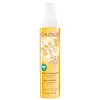What's inside
What's inside
 Key Ingredients
Key Ingredients

 Benefits
Benefits

 Concerns
Concerns

 Ingredients Side-by-side
Ingredients Side-by-side

Water
Skin ConditioningDicaprylyl Carbonate
EmollientVitis Vinifera Fruit Water
Skin ConditioningDibutyl Adipate
EmollientIsoamyl P-Methoxycinnamate
UV AbsorberPropanediol
SolventButyl Methoxydibenzoylmethane
UV AbsorberC20-22 Alkyl Phosphate
EmulsifyingEthylhexyl Triazone
UV AbsorberC20-22 Alcohols
Emulsion StabilisingBenzotriazolyl Dodecyl P-Cresol
UV AbsorberBis-Ethylhexyloxyphenol Methoxyphenyl Triazine
Skin ConditioningGlycerin
HumectantCaprylyl/Capryl Glucoside
CleansingParfum
Masking1,2-Hexanediol
Skin ConditioningCetearyl Alcohol
EmollientGlyceryl Stearate
EmollientSodium Hydroxide
BufferingPalmitoyl Grape Seed Extract
Skin ConditioningPicea Abies Wood Extract
Vitis Vinifera Juice
AntioxidantCitric Acid
BufferingO-Cymen-5-Ol
AntimicrobialPolyacrylate Crosspolymer-6
Emulsion StabilisingTocopheryl Acetate
AntioxidantXanthan Gum
EmulsifyingSodium Benzoate
MaskingPotassium Sorbate
PreservativeTocopherol
AntioxidantBenzyl Benzoate
AntimicrobialBenzyl Salicylate
PerfumingCitronellol
PerfumingGeraniol
PerfumingHexyl Cinnamal
PerfumingLinalool
PerfumingWater, Dicaprylyl Carbonate, Vitis Vinifera Fruit Water, Dibutyl Adipate, Isoamyl P-Methoxycinnamate, Propanediol, Butyl Methoxydibenzoylmethane, C20-22 Alkyl Phosphate, Ethylhexyl Triazone, C20-22 Alcohols, Benzotriazolyl Dodecyl P-Cresol, Bis-Ethylhexyloxyphenol Methoxyphenyl Triazine, Glycerin, Caprylyl/Capryl Glucoside, Parfum, 1,2-Hexanediol, Cetearyl Alcohol, Glyceryl Stearate, Sodium Hydroxide, Palmitoyl Grape Seed Extract, Picea Abies Wood Extract, Vitis Vinifera Juice, Citric Acid, O-Cymen-5-Ol, Polyacrylate Crosspolymer-6, Tocopheryl Acetate, Xanthan Gum, Sodium Benzoate, Potassium Sorbate, Tocopherol, Benzyl Benzoate, Benzyl Salicylate, Citronellol, Geraniol, Hexyl Cinnamal, Linalool
Zinc Oxide 12%
Cosmetic ColorantWater
Skin ConditioningC12-15 Alkyl Benzoate
AntimicrobialPropanediol
SolventJojoba Esters
EmollientTridecyl Salicylate
Skin ConditioningMethylheptyl Isostearate
Skin ConditioningPolyglyceryl-4 Diisostearate/Polyhydroxystearate/Sebacate
EmulsifyingNylon-12
Niacinamide
SmoothingMethylpropanediol
SolventCoco-Caprylate
EmollientSilica
AbrasiveSodium Chloride
MaskingPolyglyceryl-2 Dipolyhydroxystearate
Skin ConditioningCaprylyl Glycol
EmollientBisabolol
MaskingAllantoin
Skin ConditioningOryza Sativa Bran Extract
Skin ConditioningLecithin
EmollientPhenylpropanol
MaskingHelianthus Annuus Extract
EmollientTocopherol
AntioxidantRosmarinus Officinalis Leaf Extract
AntimicrobialTetrasodium Glutamate Diacetate
Isostearic Acid
Cleansing1,2-Hexanediol
Skin ConditioningSodium Hydroxide
BufferingZinc Oxide 12%, Water, C12-15 Alkyl Benzoate, Propanediol, Jojoba Esters, Tridecyl Salicylate, Methylheptyl Isostearate, Polyglyceryl-4 Diisostearate/Polyhydroxystearate/Sebacate, Nylon-12, Niacinamide, Methylpropanediol, Coco-Caprylate, Silica, Sodium Chloride, Polyglyceryl-2 Dipolyhydroxystearate, Caprylyl Glycol, Bisabolol, Allantoin, Oryza Sativa Bran Extract, Lecithin, Phenylpropanol, Helianthus Annuus Extract, Tocopherol, Rosmarinus Officinalis Leaf Extract, Tetrasodium Glutamate Diacetate, Isostearic Acid, 1,2-Hexanediol, Sodium Hydroxide
 Reviews
Reviews

Ingredients Explained
These ingredients are found in both products.
Ingredients higher up in an ingredient list are typically present in a larger amount.
1,2-Hexanediol is a synthetic liquid and another multi-functional powerhouse.
It is a:
- Humectant, drawing moisture into the skin
- Emollient, helping to soften skin
- Solvent, dispersing and stabilizing formulas
- Preservative booster, enhancing the antimicrobial activity of other preservatives
Propanediol is an all-star ingredient. It softens, hydrates, and smooths the skin.
It’s often used to:
Propanediol is not likely to cause sensitivity and considered safe to use. It is derived from corn or petroleum with a clear color and no scent.
Learn more about PropanediolSodium Hydroxide is also known as lye or caustic soda. It is used to adjust the pH of products; many ingredients require a specific pH to be effective.
In small amounts, sodium hydroxide is considered safe to use. However, large amounts may cause chemical burns due to its high alkaline.
Your skin has a natural pH and acid mantle. This acid mantle helps prevent harmful bacteria from breaking through. The acid mantle also helps keep your skin hydrated.
"Alkaline" refers to a high pH level. A low pH level would be considered acidic.
Learn more about Sodium HydroxideTocopherol (also known as Vitamin E) is a common antioxidant used to help protect the skin from free-radicals and strengthen the skin barrier. It's also fat soluble - this means our skin is great at absorbing it.
Vitamin E also helps keep your natural skin lipids healthy. Your lipid skin barrier naturally consists of lipids, ceramides, and fatty acids. Vitamin E offers extra protection for your skin’s lipid barrier, keeping your skin healthy and nourished.
Another benefit is a bit of UV protection. Vitamin E helps reduce the damage caused by UVB rays. (It should not replace your sunscreen). Combining it with Vitamin C can decrease sunburned cells and hyperpigmentation after UV exposure.
You might have noticed Vitamin E + C often paired together. This is because it is great at stabilizing Vitamin C. Using the two together helps increase the effectiveness of both ingredients.
There are often claims that Vitamin E can reduce/prevent scarring, but these claims haven't been confirmed by scientific research.
Learn more about TocopherolWater. It's the most common cosmetic ingredient of all. You'll usually see it at the top of ingredient lists, meaning that it makes up the largest part of the product.
So why is it so popular? Water most often acts as a solvent - this means that it helps dissolve other ingredients into the formulation.
You'll also recognize water as that liquid we all need to stay alive. If you see this, drink a glass of water. Stay hydrated!
Learn more about Water